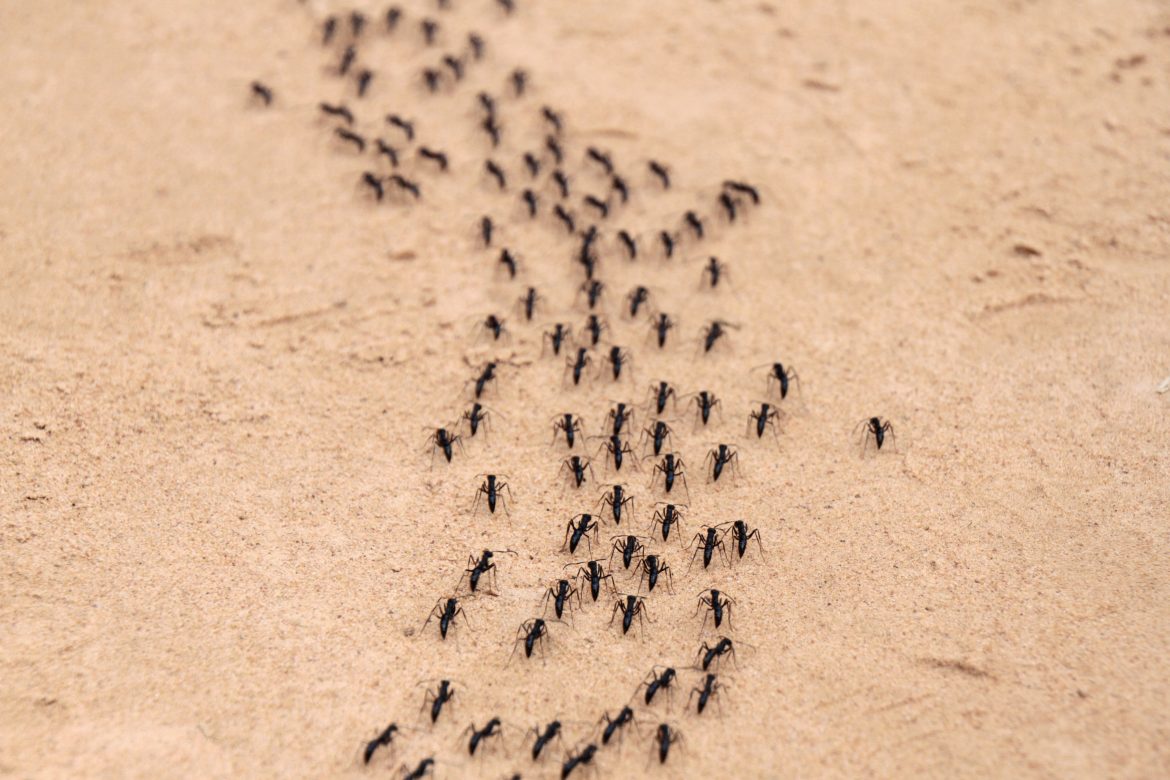Here is the updated blog article, written in a conversational yet professional tone:
Uncovering the Hidden World of Backyard Ants
Introduction: The Buzz Right Under Your Feet
In the quiet corners of yards and gardens, ants go about their business—building, foraging, defending, and thriving. Most people walk past them without a second glance. But these tiny creatures live in complex societies with division of labor, communication systems, and even conflict resolution strategies. Understanding backyard ants offers a fresh way to appreciate the micro-worlds that surround us and the intelligence packed into the smallest beings.
Ant Colonies: A Society with Purpose
Ant colonies are structured with impressive efficiency. A typical colony includes:
- The Queen: Her only job is to lay eggs. After a mating flight, she returns to the nest and rarely leaves again. Some queens live for decades.
- Worker Ants: These sterile females perform all the tasks—finding food, defending the nest, caring for young, and maintaining colony infrastructure.
- Males: Their role is limited to mating, after which they die quickly.
This tight structure allows the colony to function as a “superorganism”—a collection of individuals acting as one unified system.
Ant Communication: How Orders Are Given Without a Boss
Despite their apparent simplicity, ants have advanced methods of coordination. Their primary language? Pheromones—chemicals that guide other ants to food sources or alert them to danger. Some ants also communicate by touch or sound, tapping each other or making slight noises.
This system allows for decentralized decision-making. There’s no leader ant barking orders. Instead, each ant responds to environmental cues and chemical signals, leading to fluid, adaptive group behavior.
Meet the Ants in Your Backyard
You might be surprised at how many different species can be found just outside your door. Here are a few common ones:
- Odorous House Ants: Known for a strong smell when crushed, they often invade kitchens and are active in the spring.
- Pavement Ants: Brown to black ants that nest in sidewalk cracks. They sometimes wander indoors.
- Carpenter Ants: Large, often black ants that tunnel into wood—not to eat it, but to create nests.
- Field Ants: Often found in lawns, forming dome-shaped mounds. They’re mostly harmless.
- Thief Ants: Tiny and fond of fatty foods, they nest near other colonies and steal their food.
- Acrobat Ants: Easily identified by the heart-shaped abdomen they raise when disturbed.
Each species has evolved to thrive in specific micro-environments, from sunny sidewalks to moist mulch beds.
Ant Behaviors You Might Not Expect
Backyard ants aren’t just scavengers—they’re strategic. Some ants protect aphids, which produce a sweet substance the ants consume. In return, ants defend the aphids from predators. This symbiotic relationship is just one example of how ants farm, trade, and protect resources.
There’s even something akin to voting. When a colony needs a new home, scouts evaluate sites and recruit others to inspect. Eventually, the group reaches a consensus—not with debates, but through repeated visits and recruitment patterns. It’s one of nature’s most fascinating examples of collective decision-making.
Why Ants Matter in Modern Life
At first glance, ants may seem irrelevant to our fast-paced, digital world. But their behavior mirrors many principles of effective human systems:
- Efficiency through specialization: Everyone has a role and sticks to it.
- Adaptability: Ants shift roles or relocate when conditions change.
- Communication without chaos: Simple cues keep the group on track.
These lessons apply in everything from team management to community design. Watching ants can sharpen our understanding of collaboration and resilience.
How to Start Observing Ants
If you’re curious, there are easy ways to begin:
- Keep an ant journal: Note where and when you see ants, their behavior, and weather conditions.
- Map their trails: Track where they go and see if patterns emerge.
- Use local resources: Many university extensions offer tools for identifying regional ant species.
It’s an activity that encourages patience, observation, and appreciation of the natural world—especially the parts we usually overlook.
Conclusion: A New Perspective on the Smallest Things
Ants are more than kitchen invaders or picnic nuisances. They are builders, defenders, farmers, and communicators. Their world is governed by order, strategy, and cooperation. Learning about them invites a richer understanding of nature and offers lessons in structure, adaptation, and the quiet power of unity.
The next time you spot a trail of ants across your patio, take a moment. Watch them. Follow them. There’s a story unfolding—one that’s been going on for millions of years, right beneath your feet.

